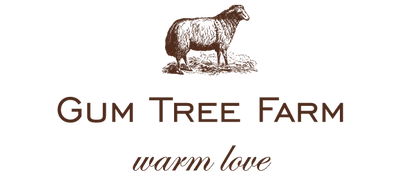Ewes Raising Ewes - Katie Carothers

EDITORS COMMENTARY ITALICIZED
A cozy white house with two rocking chairs meets us as we park at Old Slate Farm. Across the gravel driveway, there is a farm stand littered with fresh bouquets and handmade soaps, made right inside. While we get out of the car, the welcome wagon, a small calico cat, stomps towards us. Next to the greenhouse and dahlia fields, the sheep are grazing in a pasture with tall grasses, while moody clouds offer us the perfect backdrop for the farm as autumn approaches Ohio.
For those of you who are not familiar, who are you and where are we?
Katie: My name is Katie Carothers and we’re in Mount Vernon, Ohio at Old Slate Farm. We are a Katahdin Sheep and cut flowers farm. Our main focus is on grass-based Katahdin sheep.

When was Old Slate Farm Founded?
Katie: Back in 2014 when we moved here we started the farm. We started growing cut flowers, we had some horses here and had a little acre that we couldn’t use with our horses, and needed to do something with it. So, we ended up buying a couple of Katahdin sheep off of Craigslist and put them out in this little leech field area. We bought two sheep and woke up with three sheep, we didn’t realize we bought a bred ewe, and ever since then, we’ve been hooked. We’re running about 250 ewes now on scattered sites and starting solar grazing as well.

How did you develop the name for Old Slate Farm?
Katie: It came from when we were doing our first cut flower garden beds. We had our first flower field behind our house and we were tilling everything up. There must’ve been a slate-roofed building there once because we kept finding a bunch of old slate there, and that’s how it got the name. We wanted something that would allow some flexibility, in terms of what we were doing, because we like to do a lot of different things.

Along with sheep and flowers Old Slate Farm has dabbled in everything from wedding floral design to making custom soap.
What led you to raise Katahdin Sheep?
Katie: We started out with Katahdins, they weren’t registered or anything like that. We tried out a couple of different types of sheep as well. We really got into the scientific research that’s been done on these sheep. So, we are in the NSIC which stands for the National Sheep Improvement Program. We take a lot of data on the sheep which is synthesized by smart people in Australia that gives us values to select for parasite resistance and some other easy care maintenance traits. We started on that and raising breeding stock to sell to other shepherds. You’re a pest, yes you are! [she says to the sheep nibbling on her skirt]. This is functional shepherding clothing, it has to hold us to a sheep bite [she laughs].
Do you think social media depictions of farm life are more glamorous than actual life on a farm?
Katie: Yes and no. It’s a choice to do this, and a privilege to do this. I don’t see it either way because it is glamorous, not everyone is able to do this. You have to own land and you have to have the flexibility of a partner with an off-farm job, in our instance, to build this. This didn’t just happen overnight, and it is a nice lifestyle. I think some people might not realize how much goes into it because it is a lot of work but at the end of the day it’s what we choose to do and we are lucky to be able to make that choice.
Do you have advice for people looking to start a herd?
Katie: I would say if you wanted to get into shepherding the best thing you can do is educate yourself as much as possible. Attend events, most states have statewide shepherding seminars. It’s a great way to meet people, a great way to connect with breeders to buy good stock. Don’t do your research only on Facebook groups and the internet, really go to actual seminars. Meet with the professors and people doing research, and learn everything you can. You don’t need to learn everything before you get your first sheep but if you do it in tandem then you’ll be a lot more successful.
What’s the difference between hair sheep and wool sheep, other than the obvious?
Katie: Other than the obvious. The Katahdin breed is a composite breed that was developed from the St Croix Sheep, which is a Caribbean sheep. Obviously, the sheep in the Caribbean don’t require wool, just as the people in the Caribbean don’t necessarily require wool. All the sheep down there don’t hold onto their wool like the British Breeds. The St. Croix sheep are pretty small-framed, so a clever man from Maine developed this breed by crossing the St. Croix sheep with some British Wool Breeds and was able to develop the Katahdin sheep which is named after Mount Katahdin in Maine. Essentially these guys, like your dogs, will grow a nice thick wooly coat, sometimes they have more hair fiber. This girl has mostly hair fiber, you can see this one here has some wool on her back, and that’s just leftover from the breeds that were used to develop this kind of sheep. [Katie points to a sheep with patches of longer hair on her back.] In the springtime, they will shed their fleece. It doesn’t have any marketable value whatsoever, aside from keeping these sheep warm in the winter and we don’t have to worry about shearing it off.

When did you start using sheepdogs as a practice in your shepherding?
Katie: We got Doogle from the manager at our local feed mill who had a litter of puppies. He told us we needed to get this last puppy he had available, so we did. Luckily we were able to get in with some really great people who taught us a lot about sheepdogs and I kinda just got bit by the bug. It’s a bit of an addiction once you get into it, you start really enjoying it. I showed horses my whole life and that’s a pretty common origin story with herding dogs, people who were originally into horses getting into herding dogs. We have just amassed several dogs [Katie chuckles]. I think the sheep are getting restless. They just wanna eat their grass. [ Katie says regarding to the sheep that were being kept close thanks to her sheepdog Blair] I got Blair as a pup and started working with my mentor and trainer to bring her along and she has been a really nice little dog for us. Really just been loving the lifestyle of having the dogs and it’s really changed the way we work the sheep too. I think it’s made our flock healthier, she’s a time machine essentially. We’re able to get chores done so much quicker, not having to rely on feed buckets or building alleys or anything like that. I’m able to put these sheep anywhere on this farm I want to with just me and Blair.

How many sheepdogs do you have now?
Katie: We have 4 border collies. There’s Doogle, Blair, Storm, and Nina. Looking to add one more this fall. We enjoy it, we’re trialing and enjoying the dogs.
How long does it take to train a sheepdog?
Katie: It takes about 6 months I’ve found to get one that you can use around the farm. I’ve heard it’s several years to truly finish and we have not gotten one over the age of two. But, seems to be after 6 months or so they’re handy enough to use around the farm.
How long ago did you start participating in Sheepdog Trials?
Katie: It was a year ago in May with Doogal, it didn’t go well [She chuckles]. As sheepdog trials want to do sometimes and learned maybe he’s not a trial dog, so that’s where Blair came into play.
Tell me about Solar Grazing and your newest venture.
Katie: Solar grazing yeah! We heard about solar grazing because there were some solar grazers who were buying stud rams off of us and we noticed that becoming a trend in ram sales. So we decided to breed sheep that will do well in the solar industry which seems to be a good market. We never really thought of doing it ourselves until we had a mailer come in from a local anti-solar group in the neighborhood because there’s a project going up here. It said Stop Solar in Knox County! I said to Brad [husband] “Hey Brad they’re putting up a solar development in Knox County. We should look into this and see if we could graze it.” So unbeknownst to them that’s what got us started on it. I don’t think that was what they were going for but we reached out to the developer about solar grazing and they were right on that and wanted to talk to us and keep us involved in the project as it goes along. We’re just trying to get prepared to graze solar sites as they come online in Ohio and potentially expand into other states as well. It’s an exciting way to use land. It’s gonna be huge for the sheep industry. You know sheep are the only animals that are conducive to grazing solar because your goats will chew on the wires and your cows will rub on the panels so sheep are kind of it and that hasn’t been the case for a while. It’s offering us some land access that we wouldn’t have otherwise as well. It’s an exciting opportunity for the sheep industry.
Are you going to be raising your flock size as you venture more into Solar Grazing?
Katie: We are looking to expand pretty heavily, it’s exciting!

Being a farmer what is your take on the farm-to-fashion movement of clothing production?
Katie: I think it’s important as small farmers, and I guess it goes back to land access. If you’re a small farmer you really have to dig deep and add value to the products you have on your farm, so I think supporting that farm-to-fashion is one way to do that. I think it’s nothing but a positive really. A good way for farmers to connect with people they wouldn’t necessarily connect with ya know, and any time we can get people talking to each other it’s good too.
As a farmer what do you want from your clothing?
Katie: Yeah! Movement and durability are the two paramount things for sustainable workwear. Sustainability goes so much farther than material. It’s usability and durability, it’s being able to take a coat and wear it for 20 years, and wanting to wear it for 20 years. That’s sustainability.
As the sheep got restless we began to make our way out of the leech field. We made a pit stop by the Dahlia patch, which was closer to an organic maze than the man-made rows that used to stand. Katie returned to her work, deadheading the expired blooms. After saying our goodbyes the little calico cat walked us back to our car. With a thank you scratch, we were off.
-GTF Field Notes
Written by Ellie Auch
Photos by Alea Doronsky
@aleaphoric



